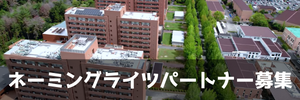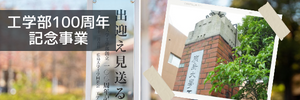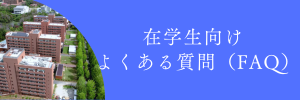(English announcement can be found in the latter half of this notice.)
広島大学バイオマスプロジェクト研究センターと中国地域バイオマス利用研究会の共催で広島大学バイオマスイブニングセミナーを開催しています。バイオマスに関する基本的な考え方から最先端の情報までをカバーして、この地域におけるバイオマスの活動に資することを目的とするものです。第50回を以下の日程で開催しますので、ご参集下さい。
日時 2017年2月6日(月)16:20~17:50
会場 広島大学東広島キャンパス工学部110講義室
http://hiroshima-u.jp/eng/access/lectureroom
http://hiroshima-u.jp/eng/access/building
http://hiroshima-u.jp/access/
プログラム
解説、司会 広島大学大学院工学研究院 教授 松村 幸彦
講演 広島大学大学院工学研究院 特任助教 Obie FAROBIE
「スパイラルリアクタを用いた超臨界酢酸メチルの非触媒バイオディーゼル製造:プロセス評価」
超臨界法を用いたバイオディーゼル製造は、反応速度が速く、反応時間が短く、触媒が不要であることから有望な技術です。しかし、この技術は依然として商業的応用にとって依然として問題となっている熱回収に関する課題に直面しています。そこで、本研究ではスパイラルリアクタを提案しました。我々の以前の研究では、この反応器が従来の超臨界装置と比較して装置スペースが小さく、熱回収の点で優れているという利点があることが報告されています。しかしながら、超臨界酢酸メチルにおけるバイオディーゼル生成のプロセス分析は、エネルギー分析の観点からは十分に検討されていません。そこで、本研究の目的は、スパイラルリアクターを用いた超臨界酢酸メチルのバイオディーゼル製造プロセス評価を行うことです。分析結果は、このプロセスの正味エネルギー比(NER)およびエネルギー効率がそれぞれ0.97および0.99であることを示しました。
講演 広島大学大学院工学研究科 M2 Tanawan Chalermsaktrakul
「キシロースと酢酸混合物の超臨界水ガス化」
ヘミセルロースのモデル物質であるキシロースの水熱ガス化は、連続流動反応器を用いて酢酸の存在下で高温高圧下(400℃、25MPaまで)で行いました。酢酸は有機化合物の一つであり、環境に優しく、低腐食性であり、またヘミセルロースガス化の副生成物でもあるので、キシロースの超臨界水ガス化における各反応の挙動をよりよく理解する触媒として選択されました。本研究では、酢酸を添加した場合と添加しない場合のキシロース分解の反応速度定数を比較することを目的としました。滞留時間の影響を決定するため0.5から5秒まで変化させました。キシロースの濃度は1.5重量%の酢酸と混合した1.5重量%でした。キシロースの超臨界水ガス化で酢酸を添加するとラジカルスカベンジャーとして作用してH+となり、ラジカル反応であるレトロアルドール反応と炭素ガス化生成が抑制されました。一方、キシロースとキシルロースのフルフラールへの脱水は著しく促進されました。
講演 広島大学工学部 B4 糸永 誠
「木質バイオマスのメタン発酵における湿式ミリング前処理条件の検討」
福島第一原子力発電所の事故で発生した放射性物質により汚染された木質バイオマスを処理・減容化する方法としてメタン発酵に着目しました。現在、本研究室では木質バイオマスを金属ビーズ・酵素液と共に攪拌し、粉砕・糖分解を同時に行う湿式ミリング法を前処理プロセスとしたメタン発酵プロセスの開発を進めています。本研究では、処理時間・添加酵素量を変えて得られた処理物のメタン発酵試験を行い、最適な湿式ミリング前処理条件を検討しました。
なお、18:00より意見交換会(参加費 800円)を開催します。ご都合の付く方はこちらにもご参加下さい。
The 50th Hiroshima University Biomass Evening Seminar
(The 7th Hiroshima University ACE Seminar)
Biomass Project Research Center, Hiroshima University, and HOSTY Association are co-organizing the Hiroshima University Biomass Evening Seminar. This seminar covers topics from the fundamentals of biomass to the latest information so that it can contribute the activities on biomass in this district. The 50th seminar will be held as follows. Please join.
Date & Time: Mon.6 Feb, 2017 16:20-17:50
Place: Engineering 110 Lecture Room, Higashi-Hiroshima Campus, Hiroshima University
http://hiroshima-u.jp/eng/access/lectureroom
http://hiroshima-u.jp/eng/access/building
http://hiroshima-u.jp/access/
<Program>
Commentary and Chair: Yukihiko MATSUMURA
Professor, Institute of Engineering, Hiroshima University
Lecture: Obie FAROBIE
Specially Appointed Assistant Professor, Institute of Engineering
“Non-catalytic biodiesel production in supercritical methyl acetate using spiral reactor: process evaluation”
Biodiesel production using supercritical method is a promising technology due to high reaction rate, short reaction time, and no catalyst requirement. However, this technology is still facing the challenge regarding the heat recovery that has still problematic for commercial application. Therefore, a spiral reactor was proposed in this study. It was reported in our previous study that this reactor offered the advantages of reduced apparatus space compared to conventional supercritical equipment and of superior in terms of heat recovery. However, process evaluation of biodiesel production in supercritical methyl acetate in terms of energy analysis has not been studied well. Thus, the purpose of this study is to conduct a process evaluation for biodiesel production in supercritical methyl acetate using spiral reactor. The analysis results showed that the net energy ratio (NER) and energy efficiency of this process were 0.97 and 0.99, respectively.
Lecture: Tanawan Chalermsaktrakul
M2 Student, Graduate School of Engineering, Hiroshima University
“Supercritical water gasification of xylose and acetic acid mixture”
The hydrothermal gasification of xylose, as a model substance of hemicellulose, was carried out at high temperatures and pressures (up to 400℃, 25MPa) in the presence of acetic acid by using continuous-flow reactor. As acetic acid is one kind of organic compound, environmental friendly, low corrosiveness, and also byproduct of hemicellulose gasification, it was chosen to be the catalyst to understand more about the behavior of each reaction in supercritical gasification of xylose. This study aimed to compare the reaction rate constant of xylose decomposition with and without acetic acid addition. The experiments were investigated to determine the influence of residence time varied from 0.5 to 5 s. The concentration of xylose was 1.5 wt% mixed with 1.5 wt% of acetic acid. When acetic acid was added in supercritical water gasification of xylose, it provided H+, so the retro-aldol reaction and carbon gasification production, which are radical reactions, were be suppressed. Meanwhile, the dehydration of xylose and xylulose to furfural was be promoted significantly.
Lecture: Makoto ITONAGA
B4 Student, School of Engineering, Hiroshima University
“Optimization of wet milling pretreatment for methane fermentation of woody biomass”
Fukushima nuclear accident brought down radiation-contaminated woody biomass. We have expected that methane fermentation is useful for reducing volume of such biomass with energy recovery. Hence, we are developing the process of methane fermentation of woody biomass pretreated with a wet milling method, by which biomass is crushed and decomposed in a vessel containing small metal beads and hydrolytic enzymes. In this study, we carried out the optimization of pretreatment conditions of the wet milling method for methane production from woody biomass including the treatment time and the amount of enzyme.
We will hold the discussion meeting from 18:00 (800 JPY needed). Join this meeting, too if you are available.


 Home
Home









